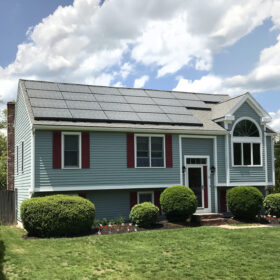States that are served by a multi-state transmission provider will have a six-month window to influence long-term transmission planning in a way that can enable more renewables.
“Active and collaborative engagement” by state utility regulators is needed so that transmission providers, known as RTOs and ISOs, develop transmission plans that achieve “sustainable grid development” in the coming decades, says a report prepared by the consultancy Brattle for the renewables trade group ACORE.
RTOs and ISOs are required to develop long-term transmission plans by two Federal Energy Regulatory Commission (FERC) orders, Order 1920 and Order 1920-A, explained Elise Caplan, ACORE’s Vice President of Regulatory Affairs. The orders call for RTOs and ISOs to conduct a six-month state engagement process prior to submitting their transmission plans. “In this process, state utility regulators provide input into the development of the long-term scenarios,” Caplan said.
The Brattle report focuses on advanced transmission technologies that can improve transmission at lower cost than simply adding new transmission lines. Because electricity consumers ultimately pay for transmission investments, lower-cost transmission options mean lower electricity bills.
The report says that states should work to ensure that RTOs and ISOs integrate advanced transmission technologies in their transmission plans. It describes how states can effectively engage early in the planning process, and could “effectively develop a preferred loading order for transmission selection that aligns with state priorities.”
One advanced technology, known as high-performance conductors (HPCs) or advanced conductors, can greatly increase transmission capacity, enabling interconnection of more large-scale renewables without the need for new transmission corridors.
Other technologies, known as grid-enhancing technologies (GETs), have a high benefit-to-cost ratio and are suitable for “transfer increase needs of 25% or less,” the report says. One study showed that GETs technologies may benefit wind power more than solar.
The Brattle report is titled “Incorporating GETs and HPCs into Transmission Planning Under FERC Order 1920.”
Caplan said the report describes how state utility regulators can use the engagement process “to ensure full inclusion” of grid-enhancing technologies and high-performance conductors.
The report discusses the “essential role” of state regulators in helping transmission providers “navigate complexities, realize the full potential” of the advanced technologies, “and accelerate the industry transition.”
FERC has recognized the advanced technologies, the report says, “as potential solutions to be considered” for transmission expansion, whether for generation interconnection in Order 2023, or for long-term transmission planning in Order 1920. FERC also outlined, in Order 1920, seven benefits that long-term transmission planning should consider when selecting facilities, and asked transmission providers “to apply them to all potential transmission solutions,” including GETs and HPCs.
The Brattle report shows how GETs and HPCs provide the seven benefits that RTOs and ISOs should consider in their transmission planning.
This content is protected by copyright and may not be reused. If you want to cooperate with us and would like to reuse some of our content, please contact: editors@pv-magazine.com.








By submitting this form you agree to pv magazine using your data for the purposes of publishing your comment.
Your personal data will only be disclosed or otherwise transmitted to third parties for the purposes of spam filtering or if this is necessary for technical maintenance of the website. Any other transfer to third parties will not take place unless this is justified on the basis of applicable data protection regulations or if pv magazine is legally obliged to do so.
You may revoke this consent at any time with effect for the future, in which case your personal data will be deleted immediately. Otherwise, your data will be deleted if pv magazine has processed your request or the purpose of data storage is fulfilled.
Further information on data privacy can be found in our Data Protection Policy.